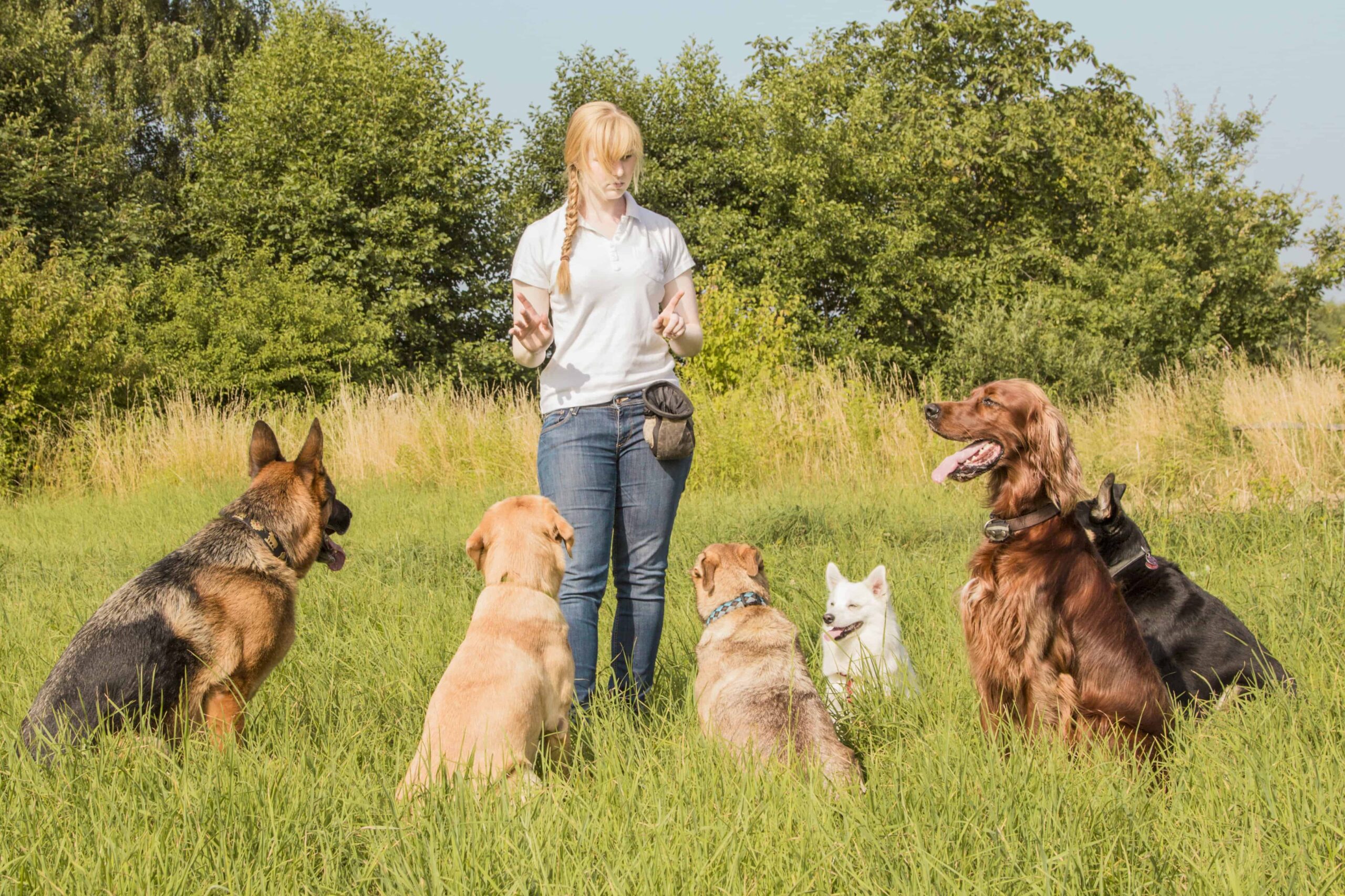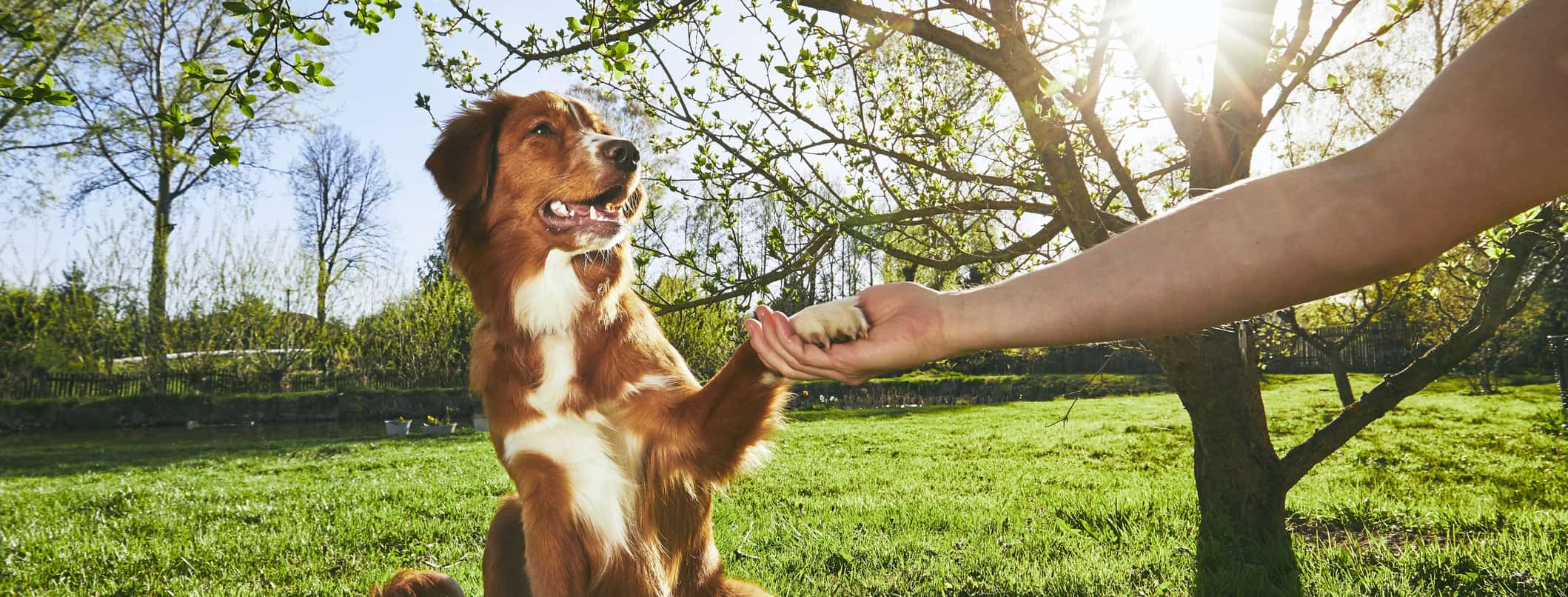Just how to Select the Right Method for Effective Dog Training
Just how to Select the Right Method for Effective Dog Training
Blog Article
Necessary Tips for Successful Dog Training: An Overview for Animal Owners
Reliable dog training is a multifaceted process that needs a critical approach customized to both the pet's personality and the proprietor's objectives. Comprehending exactly how to navigate these barriers can dramatically improve the training experience, eventually changing the relationship in between owner and pet.
Understanding Canine Behavior
Recognizing dog actions is necessary for efficient training and promoting a harmonious connection in between pooches and their proprietors. dog training. Canines interact mostly with body language, vocalizations, and actions, making it crucial for owners to analyze these signals properly.

Socialization plays a significant function in dog habits; direct exposure to various settings, individuals, and various other animals can considerably affect a canine's personality. Furthermore, factors such as breed qualities and private character need to direct training methods, as some breeds might have specific behavior characteristics that demand tailored techniques. By recognizing these elements, proprietors can create an encouraging atmosphere that urges positive habits, resulting in successful training results and a deeper bond with their animals.
Developing Regular Commands
Reliable communication with your dog starts with developing regular commands. This foundational component of training is essential for promoting understanding in between you and your family pet. Uniformity in the commands you utilize makes sure that your pet dog can accurately link certain words or expressions with the desired habits.
When picking commands, select clear, distinctive words that are easy to state and differentiate from each other. Prevent making use of similar-sounding commands that might puzzle your canine. Utilizing "rest" and "stay" is suitable, but "sit" and "hit" could lead to misunderstandings.
Additionally, maintain the very same tone and volume for each and every command. Pet dogs are sensitive to singing signs, so differing your tone can produce complication.
It is similarly essential to make sure that all member of the family get on the same page pertaining to the commands made use of. A united front in command use will protect against blended signals and reinforce the learning procedure.
Positive Support Techniques
The power of positive support in pet dog training lies in its capacity to encourage wanted behaviors through benefits and praise. This method is grounded in the concept that actions adhered to by favorable end results are most likely to be repeated. By including positive support into your training program, you can effectively shape your dog's behavior in a positive manner.
To carry out favorable reinforcement, it's necessary to recognize what encourages your canine, whether it be deals with, playthings, or verbal appreciation. When your canine does a preferred activity, such as remaining on command, quickly award them with a treat or love. This organization in between the command and the favorable outcome strengthens their understanding.
It's vital to timing the benefits correctly; delivering the support within secs of the wanted actions aids your dog make the connection (dog training). Additionally, uniformity is crucial-- make sure that all member of the family use the exact same commands and reward systems to avoid complication

Progressively, you can minimize the frequency of treats as your dog discovers the habits, transitioning to applaud or periodic rewards. This technique not only cultivates a strong bond between you and your dog however additionally promotes a positive knowing environment, making training a delightful experience for both.
Socialization and Communication
Regularly exposing your pet dog to a selection of atmospheres, individuals, and other animals is essential for their social growth. Socializing should begin early, preferably during the important window of 3 to 14 weeks, when young puppies are most responsive to new experiences. However, older canines can likewise benefit from ongoing socialization initiatives.
Present your dog to various settings, such as parks, pet-friendly stores, and city areas. This exposure assists them adjust to different stimuli, minimizing stress and anxiety and anxiety reactions. Urge favorable communications with other pet dogs and individuals, making sure that these experiences are risk-free and regulated to promote confidence.
Utilize organized playdates with genteel canines, as this can improve your pet's social abilities and teach article source them ideal habits. Obedience courses and training sessions additionally offer exceptional opportunities for socialization, allowing Click This Link your dog to connect with others in a monitored setting.
Screen your pet dog's body movement during interactions, as this will help you evaluate their comfort level. Slowly raise direct exposure to even more challenging situations while making sure that each experience is positive. A well-socialized pet dog is more probable to display balanced behavior, making them a delight to have in any setup.
Attending To Common Training Challenges
Every canine proprietor will experience training difficulties eventually, no matter their pet dog's age or socialization degree. Recognizing typical issues such as stubbornness, distractions, and terror can help in creating reliable approaches for enhancement.

Gradually present diversions as the pet dog ends up being more skilled in commands. Short, constant training sessions are additionally efficient in preserving focus.
Terror can hinder a pet's knowing procedure. Steady desensitization to the source of anxiety, coupled with favorable reinforcement, can help alleviate anxiousness. Persistence is crucial; never require a pet dog into a circumstance that causes distress, as this might worsen the issue.
Eventually, understanding and addressing these usual obstacles with an organized strategy will cultivate an extra effective training experience, strengthening the bond between dog and owner while advertising efficient discovering.
Verdict
In summary, successful pet dog navigate to this site training relies upon an extensive understanding of canine habits, the establishment of regular commands, and the application of favorable support methods. Socializing plays a critical duty in creating well-adjusted pet dogs, while attending to common training challenges needs persistence and versatility. By executing these essential approaches, family pet proprietors can cultivate a solid bond with their dogs and promote desirable habits, inevitably bring about a harmonious connection in between humans and their canine companions.
Recognizing pet dog behavior is necessary for efficient training and promoting an unified relationship between dogs and their proprietors.Socializing plays a significant function in dog behavior; direct exposure to numerous atmospheres, individuals, and other pets can significantly influence a pet dog's personality.The power of positive support in pet training lies in its ability to motivate preferred habits via incentives and praise. By including favorable support into your training regimen, you can properly shape your pet dog's habits in a positive fashion.
In summary, successful canine training relies on an extensive understanding of canine behavior, the facility of consistent commands, and the application of positive support strategies.
Report this page